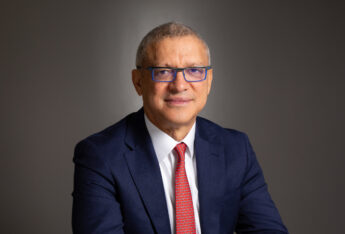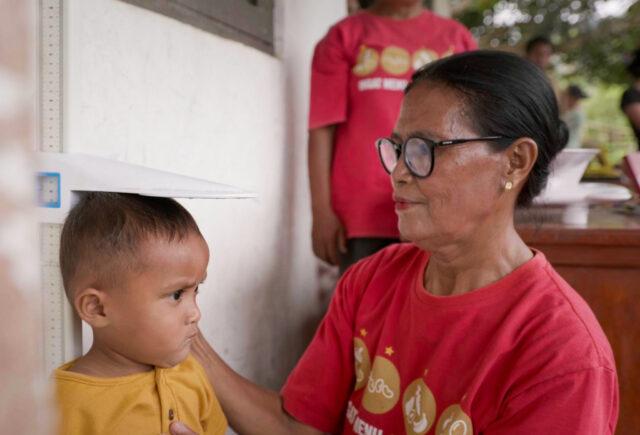The report, prepared by global research consultancy Itad, identifies four actions that DFIs can take to mobilise private capital at scale to advance the Sustainable Development Goals and deliver meaningful climate action.

A new report commissioned by British International Investment (BII) has analysed the financial tools and structures that can enable development finance institutions (DFIs) to increase their capacity to mobilise private capital towards climate-related goals and the Sustainable Development Goals (SDGs) in low- and middle-income countries.
BII said that achieving the SDGs and delivering meaningful climate action requires levels of investment that far outreach what public finance alone can provide, making the increase in private capital to emerging markets and developing economies (EMDEs) essential to bridge the finance gap.
Leslie Maasdorp, CEO at BII, told Impact Investor that DFIs play a critical role in bridging this gap by mobilising private capital into emerging markets, creating scalable investible opportunities that will attract institutional capital.
“Mobilisation is one of the most powerful tools we have to accelerate development and climate action,” he said.
Mobilisation programme
The report, prepared by research consultancy Itad, is part of a wider evaluation and learning programme focused on private capital mobilisation being spearheaded by the UK’s Foreign, Commonwealth & Development Office and BII. It highlights the growing demand from shareholders for DFIs to follow in the footsteps of multilateral development banks (MDBs), most of whom have had mobilisation as part of their business strategies for some time.
“MDBs have long embedded mobilisation into their strategies, while DFIs have focused on individual transactions like syndicated loans,” said Maasdrop, explaining that this approach has not scaled fast enough.

“DFIs recognise the need to evolve their models to align with institutional investors’ expectations,” he said, explaining that institutional investors seek large, diversified, long-term opportunities.
“At BII, we’re shifting toward platform-based models such as Ayana in India and Growth Investment Partners Zambia, co-investing with partners like NIIF in India and Zambia’s largest pension fund respectively. These efforts reflect a broader move to align with investor expectations and scale impact,” he added.
Ayana is BII’s renewable energy platform in India, and has mobilised over $1bn (€862m) at both project and platform levels.
The report’s authors say that mobilisation of private capital should focus on financing with a high impact on sustainable development, and which is additional to the private financing that would occur without DFI involvement.
From ‘originate-to-hold’ to ‘originate-to-share’
The report’s authors say that DFIs were set up to go ‘where private capital feared to tread’ and that for a long time, their business model has been mostly ‘originate-to-hold’, meaning investment officers, particularly in large MDBs and most bilateral DFIs, sourced senior fixed-rate hard currency loans and held them to maturity, or took long term passive minority equity stakes in firms.
Private commercial banks on the other hand, which in the past also operated as ‘originate-to-hold’ strategies, have over the last 50 years evolved towards an ‘originate-to-distribute’ strategy, focusing on originating new assets and selling them in capital markets.
The authors say a similar shift is being discussed for DFIs, but rather than fully offloading assets they originate, DFIs have an interest in retaining some exposure to the assets for longer periods, to enable them to continue engaging with clients to achieve the intended development impact. This emerging DFI strategy has been called ‘originate-to-share’, with DFIs using their origination capacity to generate a flow of assets with strong ESG and impact characteristics, while sharing the risk exposure with private investors.
“The traditional ‘originate-to-hold’ model limits DFIs’ ability to scale and ‘originate-to-share’ is essential to allow us to share risk and assets with private investors, freeing up balance sheets and expanding reach,” said Maasdorp, adding that the shift to the ‘originate to share’ model is already underway and is key to unlocking the volume of capital needed for global development.
The report’s authors advise that rather than applying this approach one transaction at a time, which is the way DFIs have traditionally syndicated loans, a closer match for investor appetite involves aggregating the assets into risk-diversified portfolios that align with the risk appetite and country/sector preferences of different groups of investors. This involves sharing the credit risk of these assets with co-investors through a range of structures.
“DFIs must also structure pooled assets to meet institutional requirements, using tools like securitisation and fund structures,” Maasdorp added.
Four key shifts
The report identifies four key shifts that DFIs can make to mobilise private capital at scale using the ‘originate to share’ approach. This includes scaling their origination and portfolio management capacity; pooling their assets and sharing the credit risk with private investors on a portfolio basis; making assets more investable; and collaborating with others.
The authors suggest that pooling assets across multiple DFIs could help to overcome limitations in origination, create efficiencies and help to create larger, risk-diversified structures more attractive to investors. DFIs can also work with private asset managers to supplement their own capacity to structure, manage and share assets.
Maasdorp said all four shifts are interconnected and ideally pursued together.
“For instance, BII has scaled origination through platforms, pooled assets to align with investor needs, and used risk-sharing tools like guarantees. We also collaborate with others, such as FinDev Canada on strengthening concessional finance collaboration, and PIC in a MOU to accelerate joint investments across Africa,” he said
“While prioritisation may depend on context, a unified strategy ensures these shifts reinforce each other and maximise mobilisation potential,” Maasdorp added.






